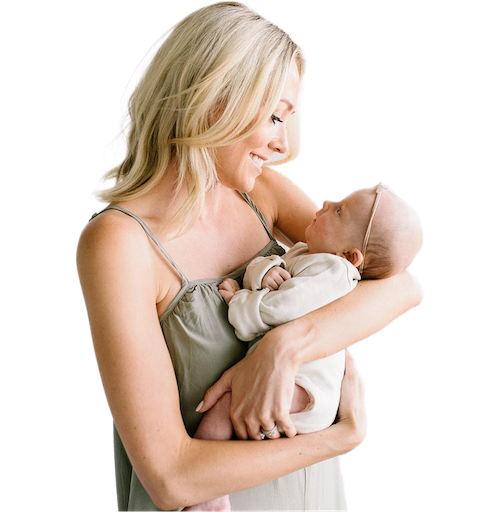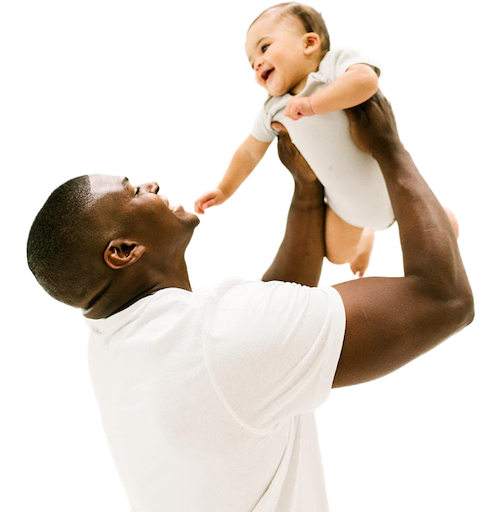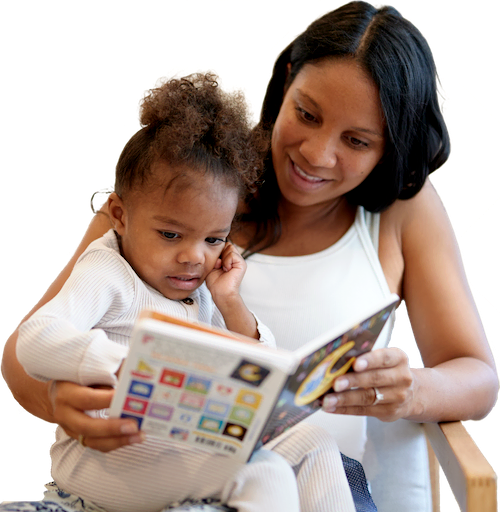When preparing for your baby’s arrival, one of the (many) things you’re probably thinking about is your baby’s nursery. Whether you’re planning on setting up a nursery in your bedroom or a separate room, let me give you my ultimate nursery checklist. I’ll share my nursery essentials and must-haves, nursery organization hacks, and answer some of my most frequently asked nursery set up questions.
When is the best time to set up a nursery?anchor
Many parents decide to set up their nursery late in the second trimester or early in the third trimester. This allows for time to dream and plan while still making sure you’re ready for your baby’s arrival. As a bonus, this is often about the time when baby showers happen.
But can I let you in on a secret? There’s no “perfect” time to set up a nursery. Some parents-to-be start planning their baby’s nursery design as soon as they find out they’re expecting. Others wait until after their baby comes home to set up the nursery. The time that feels right to you is the “best” time for your family.
Expert Tip: If you’re pregnant, you may experience a “nesting period” during the last few weeks of pregnancy (a time of feeling motivated to organize and prepare for birth). This is a great time to do some simple organizing around the nursery, put crib sheets on the mattress, or set up diaper-changing baskets around the house.
What do you need in a nursery?anchor
From deciding on a design or theme to planning the room layout, decorating your baby’s nursery can be exciting. On the other hand, if creating a picture-perfect nursery isn’t the right fit for your family, it’s okay. Babies truly don’t need much.
Nursery must-haves:anchor
Safe place for the baby to sleep. Be sure that it's labeled “crib,” “portable crib” “bassinet,” or “play yard.”
Swaddles that have Velcro or a zipper.
Sound machine (Use code CARA20).
Pacifiers (Wondering why I consider pacifiers a must-have? Let me tell you!)
Nursery nice-to-haves:anchor
Changing table or changing pad (secured according to manufacturer guidelines)
Glider or rocking chair
Nightlight for night feedings and diaper changes
Room darkening shades or curtains (use code Cara)
Books
Toy storage
Laundry basket
Cooler or mini-fridge for middle-of-the-night feeding or pumping.
Expert Tip: When setting up your nursery, think about what you will need for comfort and convenience. A rocking chair that reclines might be much more comfortable than one that simply looks pretty. In the next few years, you may be spending a lot of time in that rocking chair, so look for items that are comfortable for you!
How do I set up a nursery for baby sleep? anchor
Did you know there are some things you can do when setting up your baby’s room that can actually help with sleep? Here’s my nursery checklist for a healthy sleep environment:
Safe: Be sure your baby’s room is safe for sleep. My Safe Sleep Checklist will walk you through the most up-to-date recommendations.
Dark: Light is stimulating to a baby’s brain and can make it harder to fall asleep and stay asleep. Cover windows (Code Cara) and any lights from electronics (Watch this in action).
Sound: Silence is actually unusual for babies. A sound machine (Code CARA20) creates a familiar and comforting sound while also blocking out extraneous noise.
Comfortable: Being too hot or too cold can make it harder for a baby to sleep. A cool environment (but not too cold) supports better sleep. Dress your baby how you’re dressed, then assess them and adjust accordingly.
As your little one gets older and is more aware of their surroundings, it helps to minimize distractions in your baby’s room. If adding a mobile, consider hanging it above the changing table instead of the crib. Hanging it over the crib can be stimulating and make it hard for your baby to sleep- but over the changing table can be a positive distraction during diaper changes!
Expert Tip: Having a plan helps to set everyone up for restful sleep. My First Five Months Bundle has all of my best tips and leads you step-by-step towards sleep success. I can help you lay a healthy foundation and work towards longer stretches of night sleep without any crying.
How do I set up a nursery nook in my bedroom?anchor
A nursery nook is the area of your room where you have your baby’s sleeping space and any necessities for the night. Here are my tips for setting your baby (and yourself) up for sleep success when room sharing:
Follow safety guidelines for a safe sleep surface for your baby.
Place the sound machine (Code CARA20) between you and your baby (Babies are loud and active sleepers.).
Set up the bassinet at least a couple of feet away from you. (If space allows, consider putting the bassinet across the room.)
Place a touch night light next to your bed (like this one or this one).
Cover any light from electronic sources (Think alarm clocks, televisions, etc.) and windows (Code Cara).
Consider setting up a cart with everything you need for overnight diaper changes and feedings. This can easily move to the nursery, living room, or wherever you need to care for your baby. Here are some things to include:
Burp cloths, extra swaddle, extra onesies or pajamas
Diapers, wipes, diaper cream, reusable changing pad
Water bottle and snacks for you
If nursing and/or pumping: nursing pads, breast pump, collection bottles/bags, spare nursing or pumping bra
Expert Tip: Even before you’re ready to transition your baby from your room to the nursery, I find it helpful to spend some awake time in the nursery each day. Changing diapers, getting dressed, and playing on the floor are all ways to help get your baby comfortable in their space before making the transition.
Do you have tips for nursery organization? anchor
Your nursery doesn’t need to be Pinterest worthy, but a functional nursery can be so helpful for your daily life. Here are some of my best tips for nursery organization (and here are all the products I mention):
Use a diaper caddy to keep diapering essentials together. (You may even want a bonus caddy for the living room!)
Add drawer organizers to make it easier to sort and find those tiny baby clothes.
Use closet divider hangers to hang clothes by size.
Consider a hanging closet or over-the-door shoe organizer to store swaddles, burp cloths, blankets, etc.
Use smaller containers for socks and pacifiers.
Attach a mesh bag to your laundry basket with a clothespin for socks so they don’t get lost in the wash.
Have a basket or bins to use as a quick place to toss toys, stuffed animals, and blankets.
Place a storage bin or basket in the closet to store outgrown clothes.
Add wall-mounted shelves or baskets to save floor space.
Check out this collection of nursery organization products I love.
Can I tell you one more nursery hack that I loved?
For my youngest, I hung a calendar and a pen in the nursery. On the calendar, I’d write: you slept for 6 hours, I see a tooth popping through, Jace makes you giggle when he blows on your tummy, you started crawling, the price of gas is… I so cherish his little calendar. I tried to write one thing a day. Of course, I missed many days, but it’s still so special.
*If a pen and paper isn’t your thing, there are apps out there that do the same thing.
Want tips to help set your mind at ease about baby sleep before your little one arrives?
I have a free download called 5 Things Every Expectant Parent Needs to Know about Baby Sleep.
Nursery Set Up FAQ:anchor
-
No, you don’t need both a bassinet and crib on day one. Both are considered safe sleep surfaces, so whether you choose to start with a bassinet or a crib will depend on what works best for your family. If you do use a bassinet, let me answer all of your questions about the bassinet to crib transition.
-
You may see recommendations to keep the temperature between 68-72 degrees. But, since all homes have varying temperatures, my real-life mantra when it comes to the best temperature for baby sleep is this: “Assess, don’t obsess!” when it comes to dressing your baby!
-
Babies don’t need blackout curtains, but they really do help with getting restorative sleep. If you’re not using blackout curtains and sleep is going well, there’s no need to make a change. But if you’re struggling with short naps or early morning wakings, blocking out that light is the place to start.
-
If using a humidifier, place it at least 6 feet from your baby’s sleep surface. This allows enough space to keep moisture from landing right on your baby. The American Academy of Pediatrics (AAP) recommends using “a cool-mist humidifier or vaporizer (rather than a steam humidifier) to avoid burns.” Always be sure that cords are out of your baby’s reach, keep an eye out for mold growth, and clean the humidifier according to manufacturer instructions.
Keep in mind that the information and content on this blog is for informational purposes and should not be considered medical advice. If you have questions about your child, please reach out to your doctor.








